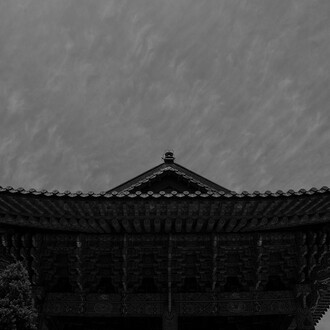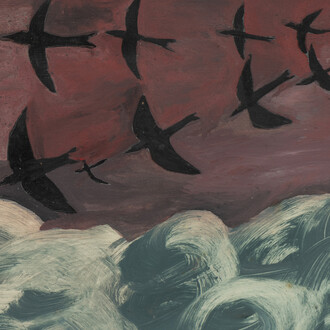Within the realm of high artistic expression, the enigmatic painter Kwangsik Jung emerges as a lyrical poet whose creative endeavors transcend the conventional boundaries of perception and reality.
In a mesmerizing art show titled "Stone Wave," Jung unveils a transformative gallery of work that beckons viewers to embark upon a physical journey, echoing Marshall McLuhan's prophetic words that "the medium is the message."
Through the masterful recontextualization of nature's ephemeral objects, Jung creates a visual symphony where stones metamorphose into canvases that resonate with profound tactility.
And yet, in the mind of this viewer, appeal of this show comes not only from the intellectual but even more profoundly the personal. If you embark upon a sonic exploration of Jung's works, you have signed up for a flight through the ethereal corridors of oscillations, guided by the language of music. This is what captivated my experience at the gallery. Like a skilled conductor and alchemist, Jung seamlessly intertwines the strands of hedonistic environmentalism and the philosophical concept of "yes is more" to weave a musical tapestry of unparalleled organicity.
The slogan "yes is more" was first proposed by the lauded Danish architect Bjarke Ingels only in the 21st century, and represents a welcome departure from the mantra of postmodernism. It advocates for a profound understanding of context of the environment. When applied to Kwangsik Jung's captivating art exhibition, "Stone Wave," the philosophy of "yes is more" takes on a planetary resonance. Jung's deliberate choice to focus on the "cut-outs" of nature and transfigure them into stone aligns with the minimalist and contextually sensitive approach advocated by the architectural concept. By distilling the essence of grassy meadows and coastal landscapes into stone sculptures, Jung eschews excessive detail, opting instead for a distilled representation that invites contemplation. In the absence of superfluous elements, the viewer is compelled to focus on the elemental beauty of the forms, their textures, and the interplay of light and shadow.
Moreover, "yes is more" resonates with the transformative nature of stone itself. Stone, with its enduring presence and timeless quality, exemplifies the essence of simplicity and longevity. Jung's meticulous chiseling echoes the architectural principle of purposeful intervention, where each stroke serves a deliberate function, creating a visual narrative that transcends the materiality of the medium. By embracing the inherent characteristics of material, Jung's art highlights the beauty found in the interplay of positive and negative spaces, the textures that emerge from the surfaces, and the subtle nuances of form.
Now, under detailed observation, some paintings are more elusive than others, and some are more requiring of the effort of the perceptive viewer, but in all of them the ethereal melodies crafted by Jung, akin to the delicate petals of a blossoming flower, evoke an immersive experience that resonates like emerald tendrils caressed by the gentle breeze, immersing the listener in a world of pleasure and environmental consciousness. It is a celebration of life's abundant joys, a sonorous testament to the belief that true happiness is intricately intertwined with the well-being of our planet.
The show succeeds on even a higher level: It features the celebrated pianist Marina Goryacheva in a celestial performance of Chopin. This unites the art, the space, and the ambiance into a nourishing symphonic delight.
Thus, just as a seed unfurls its delicate leaves towards the saving sunlight, the music of Stone Wave unfolds, revealing the interconnectedness of all things. It serves as a clarion call, urging humanity to embrace a more profound connection with nature, to revel in the sensual pleasures offered by the world around us. It is an invitation to dance amidst the composition of existence, celebrating the intricate rhythms and harmonies that unite us all. Through this exhibition, an artist and activist beckons us to listen, to truly hear, and to partake in a song that celebrates life's abundant pleasures while caring for our intrinsic connection to the world around us.
(B. Alexander, PhD)
















